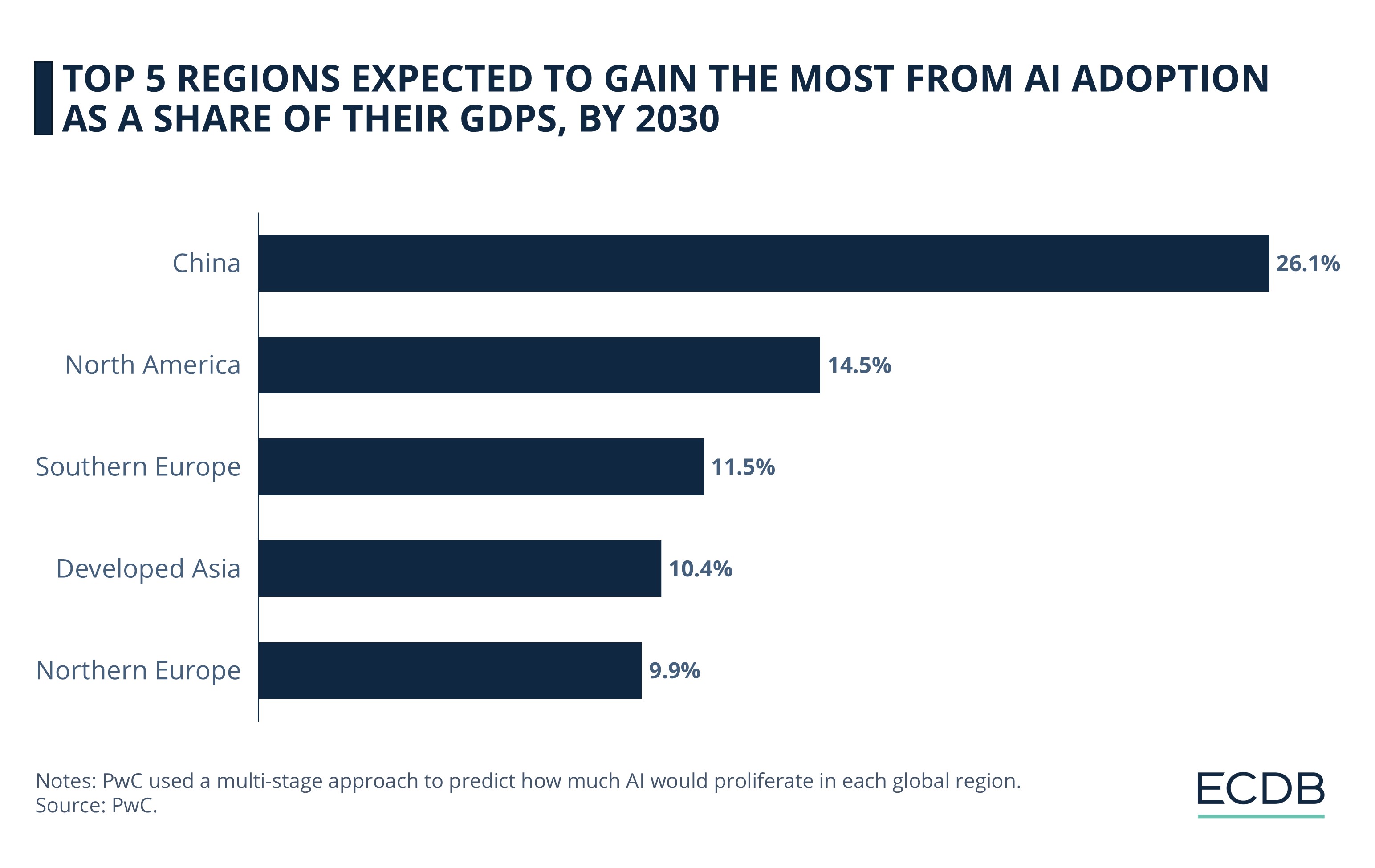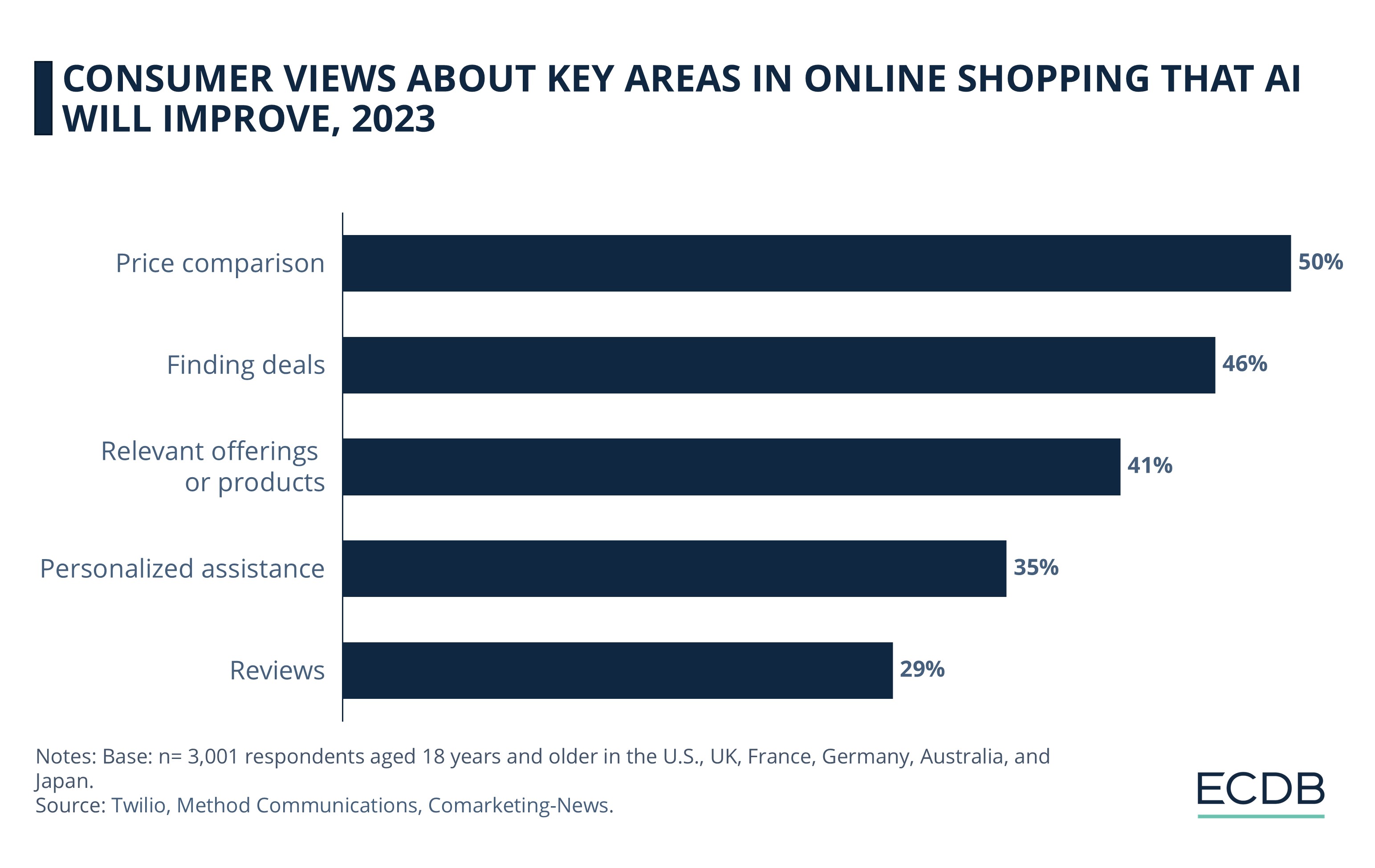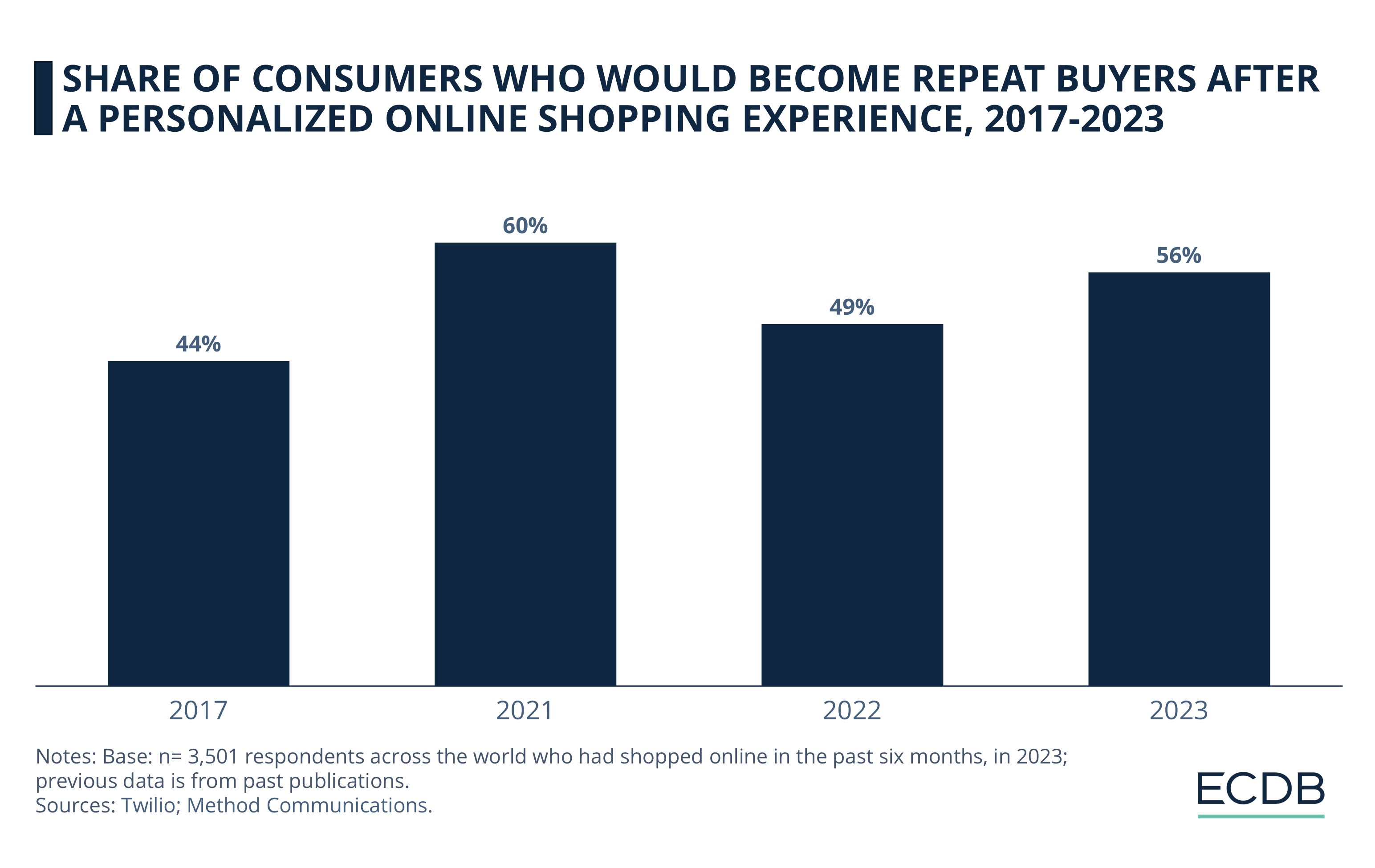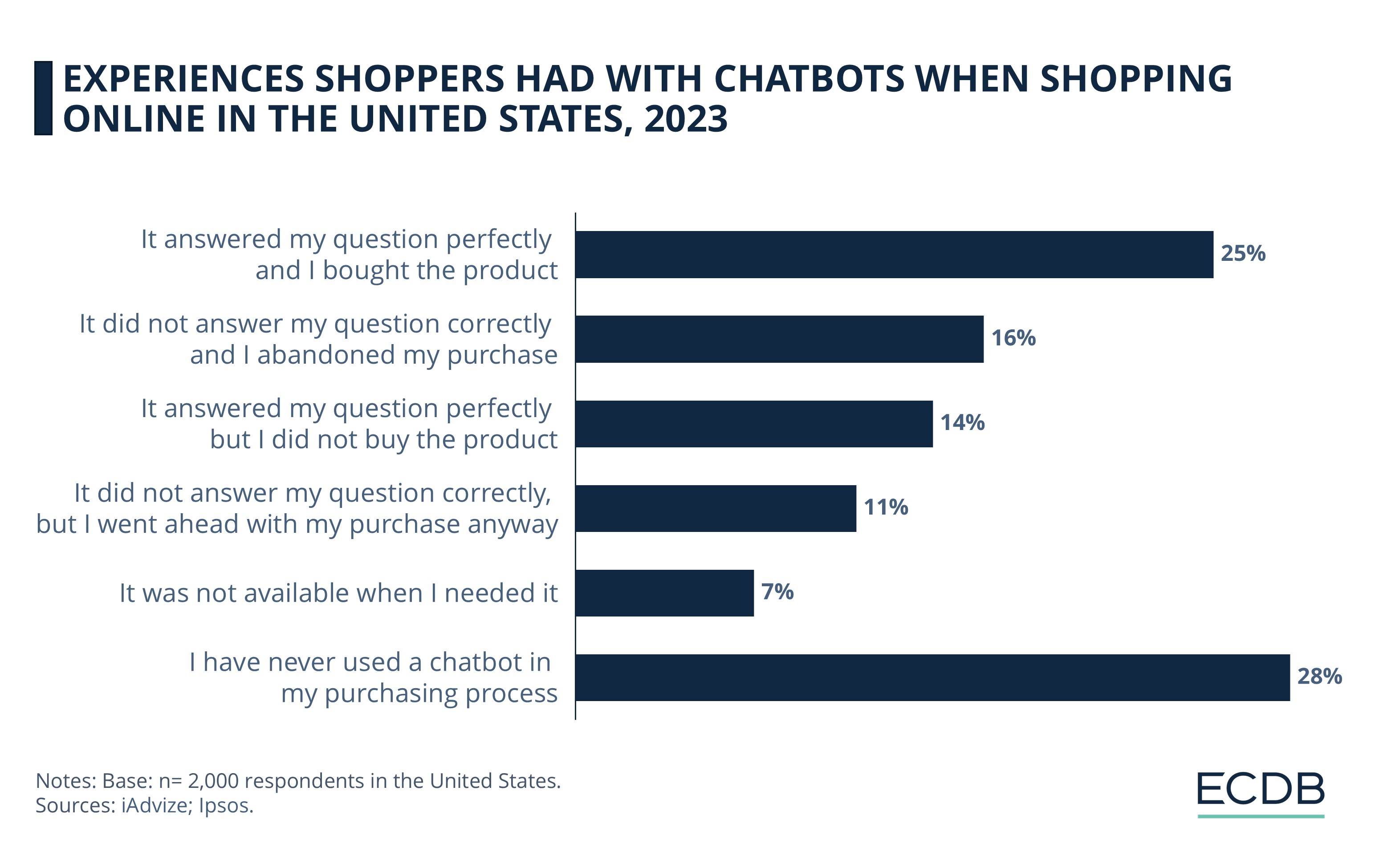AI in eCommerce
Consumers Expect AI To Improve Price Comparison, Offer Deals, and More
Artificial Intelligence offers many benefits to eCommerce—from automation to customer service to enhanced user experience. Learn how AI is projected to impact world economies, consumer views about AI, and the top 5 AI applications in eCommerce.
Article by Lukas Görlitz | August 12, 2024Searching for a product using a picture or talking to a chatbot on an eCommerce website – both have one thing in common: they are powered by Artificial Intelligence (AI).
AI applications are more mainstream today than ever before. Not only has AI disrupted industries like manufacturing and healthcare, but it has also transformed online retail.
We analyze how Artificial Intelligence is set to catalyze economic growth around the world, before diving into consumer expectations and widely used AI applications in eCommerce in 2024.
Contribution of AI to Economies: China Set to Benefit the Most
PwC predicts that AI could contribute up to US$15.7 trillion to the global GDP by 2030. To put this in perspective, this is more than the current output of China and India combined.

These regions are projected to gain the most from AI:
China is predicted to reap the most benefits from AI adoption, with the impact likely to reach 26.1% of its GDP, or US$7 trillion, by 2030. With an economy driven by manufacturing, there is significant opportunity for productivity gains through AI implementation.
North America is slated to see an impact worth 14.5% of its GDP, or US$3.7 trillion. This upswing will be fueled by the introduction of productive technologies and consumer acceptance of AI applications.
Southern Europe is predicted to see benefits amounting to 11.5% of its GDP, or US$0.7 trillion.
Developed Asia is projected to see an impact worth 10.4% of its GDP, or US$0.9 trillion.
Northern Europe is likely to see growth worth 9.9% of its GDP, or US$1.8 trillion.
In comparison, developing regions such as Latin America and Africa will likely experience modest gains, as their adoption of AI capabilities is expected to be on a smaller scale.
Importantly, while the figures show the potential effect of AI use, factors like geopolitics and global trade policy will also have major implications for economic growth.
Consumer Expectations about AI in eCommerce
AI implementation is disrupting online retail, as well as shaping people’s expectations of it, as a 2023 survey by Twilio reveals.

Consumers believe that the use of AI will improve key areas in their online shopping experience:
Half the consumers surveyed expect AI to improve price comparisons.
46% of respondents believe AI will help shoppers discover deals online.
41% expect that AI will display relevant products while they shop online.
35% of respondents think that AI will enhance personalized assistance.
29% of respondents believe AI will streamline product reviews.
The consumer expectations listed above, in fact, are being met by eCommerce companies like Amazon and Alibaba, who are leading their adoption in online retail.
Top 5 AI-Driven eCommerce Trends in 2024
How does AI help online shoppers and eCommerce retailers? We explain the top AI-based trends being used to improve online shopping.
1. Price Comparison
Price comparison is a helpful function for retailers and consumers alike.
For retailers, AI-driven dynamic pricing allows them to adjust pricing in real time through a competitor analysis. Factors such as inventory and product demand are also considered. This predictive pricing model helps them update their pricing structures per market dynamics and optimize profit. Stores like Walmart are using AI smart pricing to improve the flow of products.
For customers, AI tools sift through prices of products being sold on various platforms or by different retailers. Shoppers no longer need to visit many websites to land on a good deal. With AI, they can find multiple options in a single place and learn about shipping costs and return policies of sellers. This enables them to make informed buying decisions and get the best value for their money.
2. Personalization
Tags such as “You might also like” and “Inspired by your shopping trends” have become ubiquitous on eCommerce platforms.
This recommendation process is based on AI, which uses information like past behavioral data and demographic details to curate a list of recommended products for a buyer. Other ways stores recommend products are through push notifications, email marketing, targeted ad campaigns, and abandoned cart emails.
Personalization offers significant benefits to retailers. In 2023, over half (56%) of consumers said they would become repeat buyers after a personalized online shopping experience – slightly below the 60% seen in 2021, but well above pre-pandemic rates of 44% recorded in 2017.

An example of personalization is eBay's ShopBot on Facebook Messenger, launched as early as 2016. Termed as a smart personal shopping assistant, it offered personalized shopping suggestions. Other examples include automated product descriptions and online offers, as well as the recently viewed items menu on eBay which prompts buyers to make a purchase by quickly locating a previously browsed item.
3. Reviews
Customer reviews drive eCommerce purchase decisions. A 2022 study by PowerReviews found that sorting reviews by the highest ratings increased conversion rates by a staggering 181.3%.
AI is further improving the process. Per a Capgemini survey, in 2024, 36% of shoppers in 11 countries used automated summaries of product reviews in eCommerce, hinting at the prevalence of this feature.
Gen AI automatically creates summaries of reviews. It may highlight product features and consumer sentiment towards it, removing the need to go through pages upon pages of reviews. A snapshot of frequently referred reviews speeds up the decision-making process. Amazon’s AI generated customer review highlights, which underline product attributes, are an example of this AI application.
4. Chatbot
In eCommerce, chatbots are mainly used for customer service and as personal shopping assistants. They answer customer queries in real-time, may ask questions about preferences, and recommend personalized products.
They may also collect data for future use and send reminders in case of cart abandonment. Chatbots work 24/7, unlike human resources. It allows an online store to provide round-the-clock support to its visitors, which increases efficiency but reduces costs.

Usage of chatbots is visible in large eCommerce markets like the United States, where a quarter of surveyed consumers said they bought a product after a positive chatbot interaction. This is significantly higher than instances where shoppers abandoned a purchase after talking to a chatbot, whether it answered incorrectly (16%) or correctly (14%). A larger share of online shoppers (28%) has not yet interacted with a chatbot, indicating a potential opportunity for retailers.
A real-world example is the feature of "Instant Help" added to Alibaba’s AI-powered global sourcing tool, Smart Assistant. The AI-powered chatbot serves as key in buyer-supplier communication: it provides real-time insights, answers questions, and shares information on different verticals and product types.
5. Image Search
Image search facilitates the discovery of previously unknown products. Instead of typing descriptions into the search box, users can upload a picture and browse products online. It is simpler and faster.
AI tools analyze the pictures and match them to results. Relevant information is delivered to users almost instantly. This service is easily usable on a mobile device, which is a boon considering the rise of mobile commerce.
Alibaba’s enhanced image search and smart RFQ (request for quotation) features have demonstrated a remarkable success rate – 28% higher than customers using traditional text search. Another example is Find It On eBay, a built-in image search function through which users can find their desired items through photo uploads.
The New Frontier: AI in Logistics Management
AI use in logistics is proving to be a game-changer.
One AI application is warehouse automation, through which intensive tasks like picking, sorting, packing, and organizing inventory are done by robots. Moreover, AI-based cameras and sensors enable real-time inventory tracking. Predictive analysis through AI offers vast potential to forecast demand, fluctuations, and market disruptions. This helps optimize inventory and the supply chain.
Amazon’s AI-driven robots are improving operations at its fulfillment centers.
A robot called Digit executes tasks like moving empty boxes.
Sequoia uses vehicles to transport totes of products to designated sortation machines, where robotic arms with advanced computer vision identify inventory and streamline the delivery process for efficient dispatch to workers.
Reportedly, the use of these robots has sped up the inventory management process by 75% and reduced order processing time by 25%.
Amazon’s next steps are Prime Air drone deliveries, which are already available in Texas and California, with plans to expand the service to more cities in the U.S., UK and Italy.
Growing Importance of Last Touch Attribution
As tracking becomes more difficult, last-touch attribution will be important for eCommerce marketing teams.
Also called last-click or last interaction, last touch attribution is a type of marketing model where the final visit or touchpoint before conversion gets full credit for the conversion. It evaluates the effectiveness of different marketing channels. Measurable elements such as browser extensions enable retailers to gain a clearer understanding of their customer base and improve insights into store performance.
The impending extinction of third-party cookies in late 2024 will increase the importance of retail media network advertising, exemplified by platforms such as Walmart Sponsored Search and Amazon Ads. This shift is expected to become an enduring trend, with revenue from retail media channels projected to reach US$126 billion by the end of 2023 and likely to surpass television by 2028.
The resilience of these ads is in their targeted approach, leveraging first-party data derived from factors such as purchase history, device type and location. Targeting users during their shopping activities, these ads tap into a prime "buy" mindset. Given the dominance of four companies that control half of U.S. eCommerce, retailers must prioritize these channels and expect further developments in data-driven advertising options as these marketplaces mature.
AI Trends in eCommerce: Closing Remarks
AI is no longer just a tool, but an indispensable partner spurring eCommerce growth at a global level. Applications such as chat AIs, personalization, and product imaging have reshaped online retail for millions of online shoppers worldwide. Looking ahead, AI integration in eCommerce will likely be geared towards advancing user experience, advertising, and logistics.
With industry leaders like Amazon, Alibaba and eBay taking the lead, AI applications in eCommerce will continue improving efficiency. At the same time, AI usage has heightened concerns about privacy and the loss of human touch in customer service. Companies must allay these concerns to ensure ethical and safe use of technology in eCommerce.

Click here for
more relevant insights from
our partner Mastercard.
Related insights
Deep Dive
Valentine’s Day Drives eCommerce Revenues for Flowers & Gifts
Valentine’s Day Drives eCommerce Revenues for Flowers & Gifts
Deep Dive
Shopify Is the Most Used Shop Software Globally, But Magento Dominates in Europe
Shopify Is the Most Used Shop Software Globally, But Magento Dominates in Europe
Deep Dive
Why the Online Pharmacy Trend Has Continued Beyond the Pandemic
Why the Online Pharmacy Trend Has Continued Beyond the Pandemic
Deep Dive
Why eCommerce and Luxury Sales Are Tough to Unite
Why eCommerce and Luxury Sales Are Tough to Unite
Deep Dive
What Countries Are Driving Revenues in the Global Online Smartphones Market?
What Countries Are Driving Revenues in the Global Online Smartphones Market?
Back to main topics